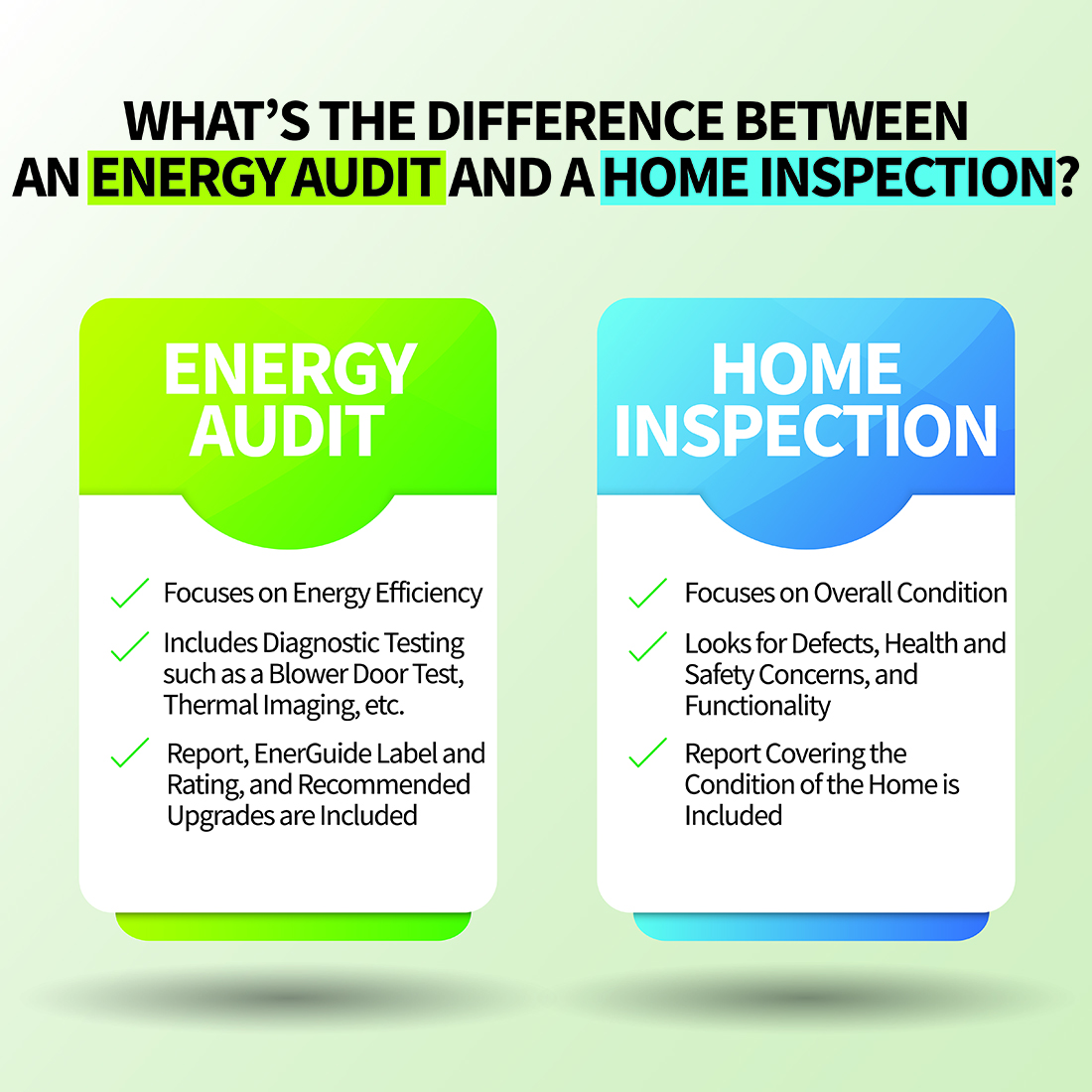Stop overpaying and start breathing easier with air tight solutions
Stop overpaying and start breathing easier with air tight solutions
Blog Article
Just How Power Testing Can Bring About Much More Lasting Living Solutions
Power testing is an important tool for promoting lasting living. It reveals inefficiencies in energy use within homes. Techniques such as energy audits and thermal imaging provide important insights. Property owners can recognize areas requiring renovation, from insulation to devices. Dealing with these ineffectiveness can cause substantial power cost savings. Numerous stay not aware of the complete possibility of these techniques. What actions can individuals require to improve their homes and add to a more sustainable future?
Recognizing Power Testing and Its Importance

Common Methods of Power Testing
There are a number of typical techniques of energy testing that home owners can make use of to evaluate their power performance (energy testing). One extensively used strategy is the blower door examination, which gauges the air leak in a home. By pressurizing the building, it determines breezy areas that may need securing. Another method is thermal imaging, where infrared electronic cameras discover temperature variations in walls, ceilings, and home windows, highlighting insulation issues.Energy audits are likewise popular, including a comprehensive evaluation of a home's energy usage, frequently conducted by a specialist. These audits might include assessing home heating and cooling down systems, devices, and total energy intake patterns. Furthermore, wise power meters can give real-time information on power use, assisting home owners comprehend their usage habits. Together, these techniques offer valuable insights, making it possible for homeowners to make informed decisions about boosting their energy performance and advertising sustainable living methods
Identifying Power Inefficiencies in your house
Recognizing energy inefficiencies in a home is necessary for property owners intending to lower energy consumption and reduced energy expenses. Typical areas to analyze consist of insulation, home windows, and home appliances. Poor insulation can result in significant warmth loss in winter season and unwanted heat gain in summertime, making cooling and heating systems function harder. Breezy windows add similarly, allowing conditioned air to run away and raising power demand.Additionally, obsolete devices typically eat more power than their contemporary equivalents, additionally aggravating ineffectiveness. Homeowners ought to likewise think about the lights system, as incandescent light bulbs utilize more energy compared to LED options.Regular maintenance of heating and cooling systems is vital, as disregard can bring about lowered effectiveness. By systematically assessing these facets of a home, home owners can identify areas needing enhancement. Resolving these ineffectiveness not only enhances comfort however additionally contributes to a more lasting way of living by reducing power waste.
The Function of Energy Audits in Sustainability
Energy audits play a necessary duty in promoting sustainability by giving property owners with an extensive analysis of their power use. These assessments recognize areas where energy is thrown away, enabling people to understand their consumption patterns and make informed decisions for enhancement. By revealing inefficiencies in heating, cooling, insulation, and devices, power audits act as an essential device for minimizing total power demand.Furthermore, they promote the execution of energy-saving steps, such as upgrading insulation or setting up energy-efficient lighting, which can considerably decrease utility expenses and reduce carbon footprints. The insights gained from a power audit empower property owners to prioritize sustainability in their living environments. As more households take part in this process, the collective influence adds to broader environmental goals, promoting a culture of energy consciousness and duty. Ultimately, power audits are foundational to advancing lasting living solutions, benefitting both individual homeowners and the atmosphere at large.
Innovative Technologies for Power Efficiency
As home owners progressively seek to enhance their energy efficiency, ingenious modern technologies are emerging to sustain these undertakings. Smart home systems, equipped with sensing units and automation, enable property owners to keep an eye on and control energy intake in real-time. These systems can adjust cooling, illumination, and home heating based on tenancy, thus minimizing waste.In addition, developments in energy-efficient home appliances have actually made significant strides. Devices such as ENERGY STAR-rated fridges and cleaning makers take in less power while supplying ideal performance. Furthermore, the assimilation of renewable resource sources, like solar panels and wind generators, makes my response it possible for home owners to generate their very own power, lowering reliance on nonrenewable resources.Building materials have actually additionally evolved, with options like protected concrete kinds and energy-efficient windows adding to reduced power loss. With each other, these cutting-edge modern technologies not only boost energy effectiveness however also cultivate a more sustainable living atmosphere, empowering home owners to make impactful options in their energy consumption methods.
Long-Term Conveniences of Sustainable Living
While numerous may watch lasting living as a trend, its long-term advantages expand far beyond mere way of living options. Welcoming lasting techniques brings about considerable decreases in carbon footprints, adding to a much healthier world. By reducing resource usage and prioritizing renewable power, communities and people can experience lower utility costs. This monetary alleviation can enhance economic security gradually, permitting reinvestment in other necessary areas.Furthermore, sustainable living cultivates more powerful community connections as people collaborate on neighborhood initiatives, promoting social cohesion. Health and wellness advantages additionally arise, as decreased contamination and enhanced environment-friendly rooms improve air high quality and overall well-being. In addition, future generations will acquire a more sustainable environment, making certain the schedule of natural deposits and biodiversity. Inevitably, the long-term advantages of sustainable living encompass environmental, economic, and social dimensions, providing a compelling instance for people to take on and preserve these techniques for the higher good.
Actions to Implement Energy-Saving Solutions
Applying energy-saving options starts with a thorough assessment of energy consumption patterns to determine locations for enhancement. As soon as these patterns are understood, people can determine energy-efficient upgrades that straighten with their demands. Continual surveillance and adjustments to energy usage assurance that these solutions stay efficient gradually.
Evaluate Energy Consumption Patterns

Examining power usage patterns is an important action towards identifying efficient energy-saving solutions. By systematically tracking usage throughout various times and individuals, appliances and organizations can pinpoint areas of excessive usage. This evaluation can reveal peak usage periods, making it possible for a better understanding of when power needs are greatest. Additionally, checking out patterns permits contrasts in between similar devices, highlighting those that operate less efficiently. Data collection approaches, such as smart meters and energy audits, provide valuable understandings into total energy use. Additionally, determining fads with time can help in identifying seasonal variants and shifts in usage routines. This fundamental understanding is important for developing targeted strategies that promote lasting living and minimize total energy expenditure.
Recognize Energy-saving Upgrades
To properly carry out energy-saving services, recognizing energy-efficient upgrades is necessary for both house owners and businesses. This process begins with a complete analysis of existing systems, consisting of heating and cooling devices, insulation, and home appliances. Upgrades might include mounting ENERGY STAR-rated devices, boosting insulation, and making use of energy-efficient windows. In addition, executing clever thermostats can enhance home heating and cooling routines, decreasing power consumption. Shifting to LED illumination is one more efficient step, as it eats considerably less power than conventional bulbs. In addition, checking out sustainable energy options, such as solar panels, can provide long-lasting savings. Eventually, prioritizing these upgrades not just contributes to minimized energy costs but likewise fosters a commitment to sustainability, benefiting both the setting and future generations.
Display and Change Use
Tracking and readjusting energy use is vital for making best use of the benefits of energy-saving services. Consistently assessing power usage patterns allows organizations and individuals to recognize areas for enhancement. By making use of wise meters and energy management systems, users can track real-time use and spot any kind of abnormalities that may indicate inefficiencies.Adjusting actions, such as turning off lights and disconnecting unused devices, additionally boosts energy financial savings. Furthermore, organizing devices to run throughout off-peak hours can significantly lower costs.Conducting routine power audits assurances that carried out solutions remain effective with time. By proactively taking part in monitoring and adjusting practices, people can Find Out More optimize their power performance, add to sustainability initiatives, and eventually minimize their environmental impact.
Frequently Asked Questions
Just how much Does a Power Audit Normally Expense?

Can Power Testing Help In Reducing Energy Costs?
Power testing can markedly reduce energy costs by determining ineffectiveness in a home's energy use. By attending to these problems, home owners commonly experience lower consumption and expenses, resulting in even more cost-effective power monitoring and improved economic cost savings.
What Certifications Should an Energy Auditor Have?
A power auditor should possess appropriate certifications, such as RESNET or BPI, along with experience in structure scientific researches. energy testing taylors sc. Strong analytical abilities and expertise of energy effectiveness practices are vital for performing exact evaluations and offering efficient suggestions
Exist Federal Government Rewards for Power Effectiveness Upgrades?
Government rewards for energy performance upgrades usually exist, including tax credit scores, gives, and discounts. These programs intend helpful resources to motivate house owners and companies to buy energy-saving modern technologies, ultimately promoting environmental sustainability and reducing general power consumption.
Just how Often Should I Conduct Energy Screening in My Home?
Energy screening should ideally be carried out yearly to determine inadequacies. Nevertheless, home owners may think about much more constant analyses after substantial remodellings, changes in energy expenses, or if unusual drafts or temperature variations are observed within the home. Power testing enables the assessment of exactly how well a home utilizes power, determining locations where waste takes place. Recognizing energy inefficiencies in a home is important for house owners intending to lower energy usage and lower utility expenses. Power audits play an essential role in promoting sustainability by giving house owners with an extensive assessment of their power use. By disclosing inefficiencies in heating, cooling, insulation, and appliances, energy audits offer as an essential tool for lowering overall power demand.Furthermore, they help with the application of energy-saving procedures, such as upgrading insulation or installing energy-efficient lighting, which can significantly decrease energy bills and minimize carbon footprints. Energy screening can noticeably reduce utility bills by determining inadequacies in a home's energy usage.
Report this page